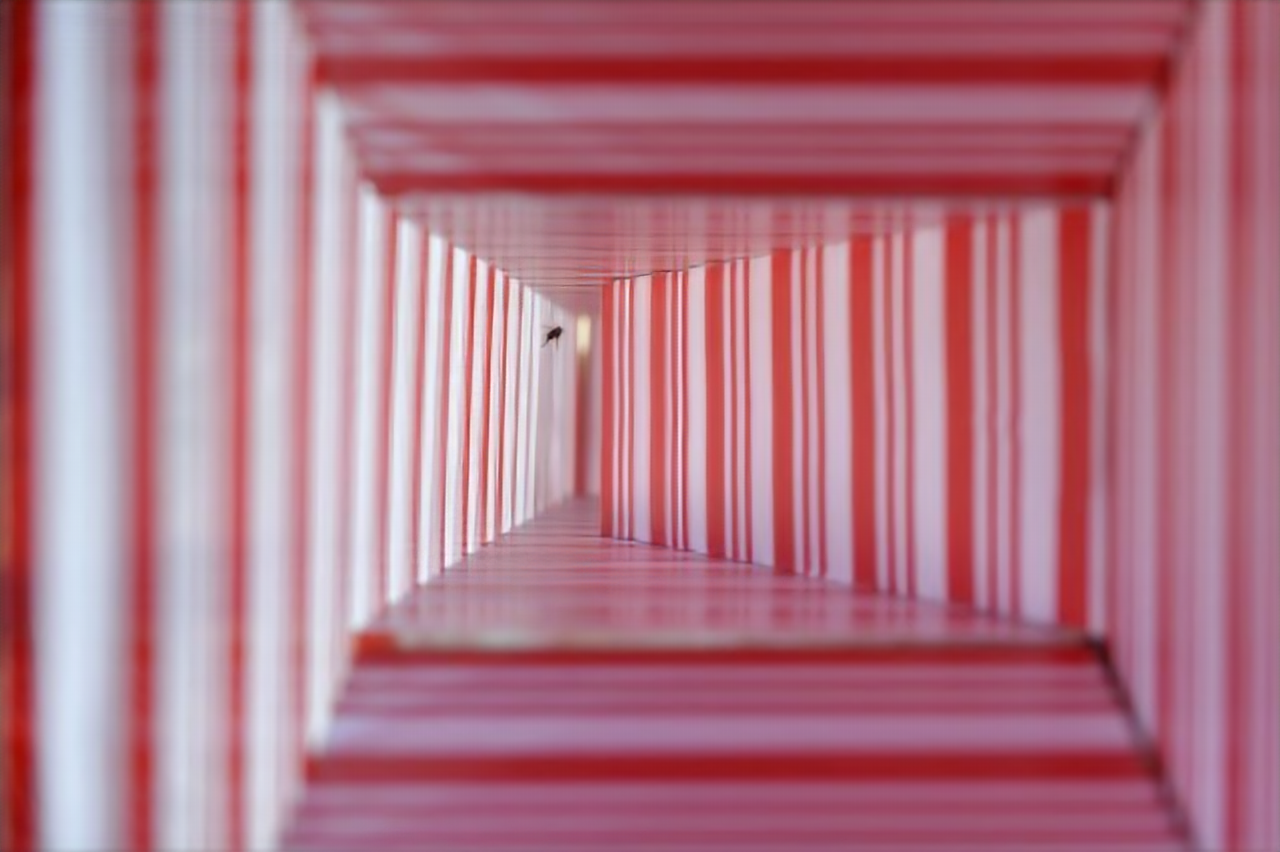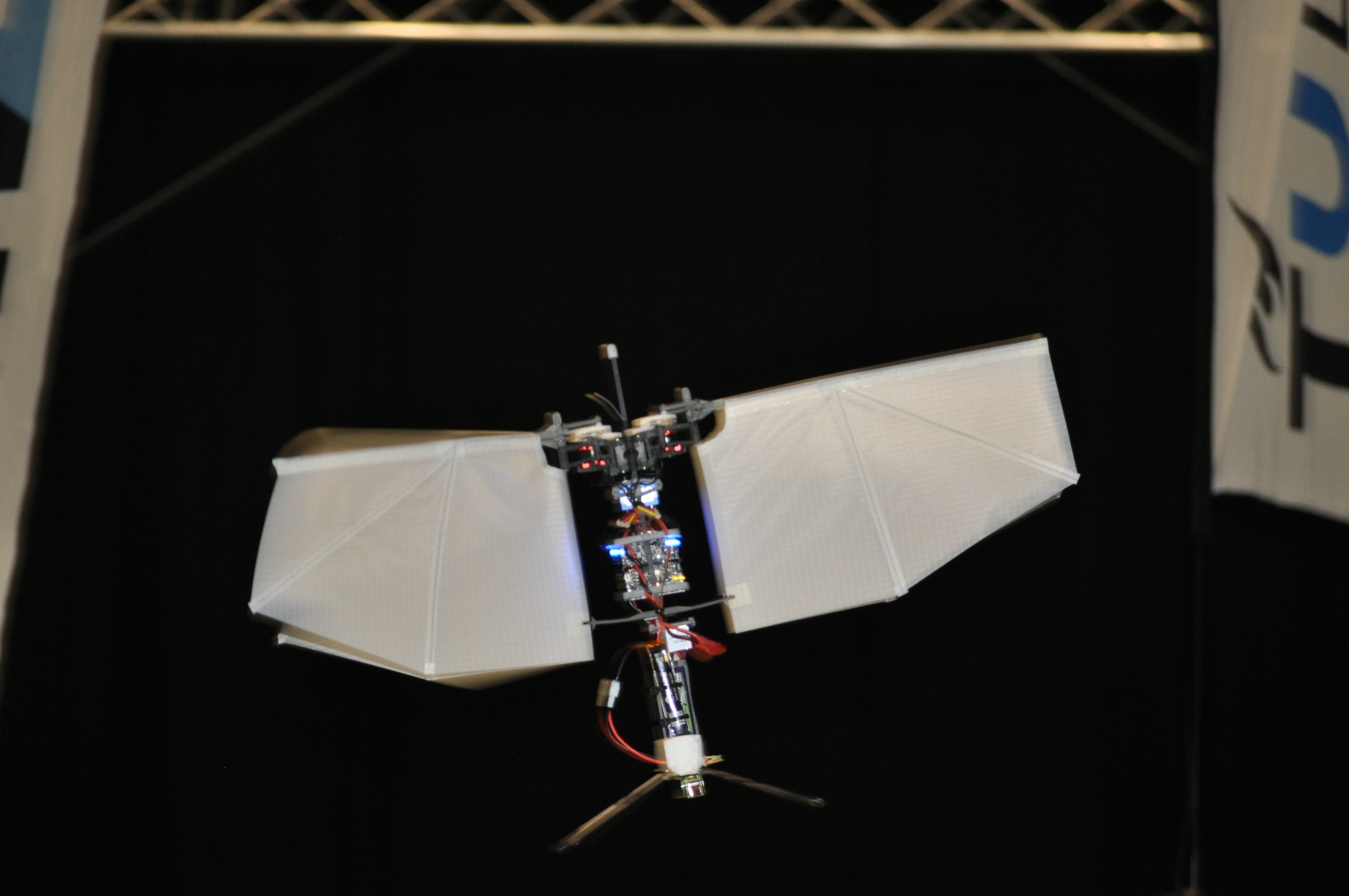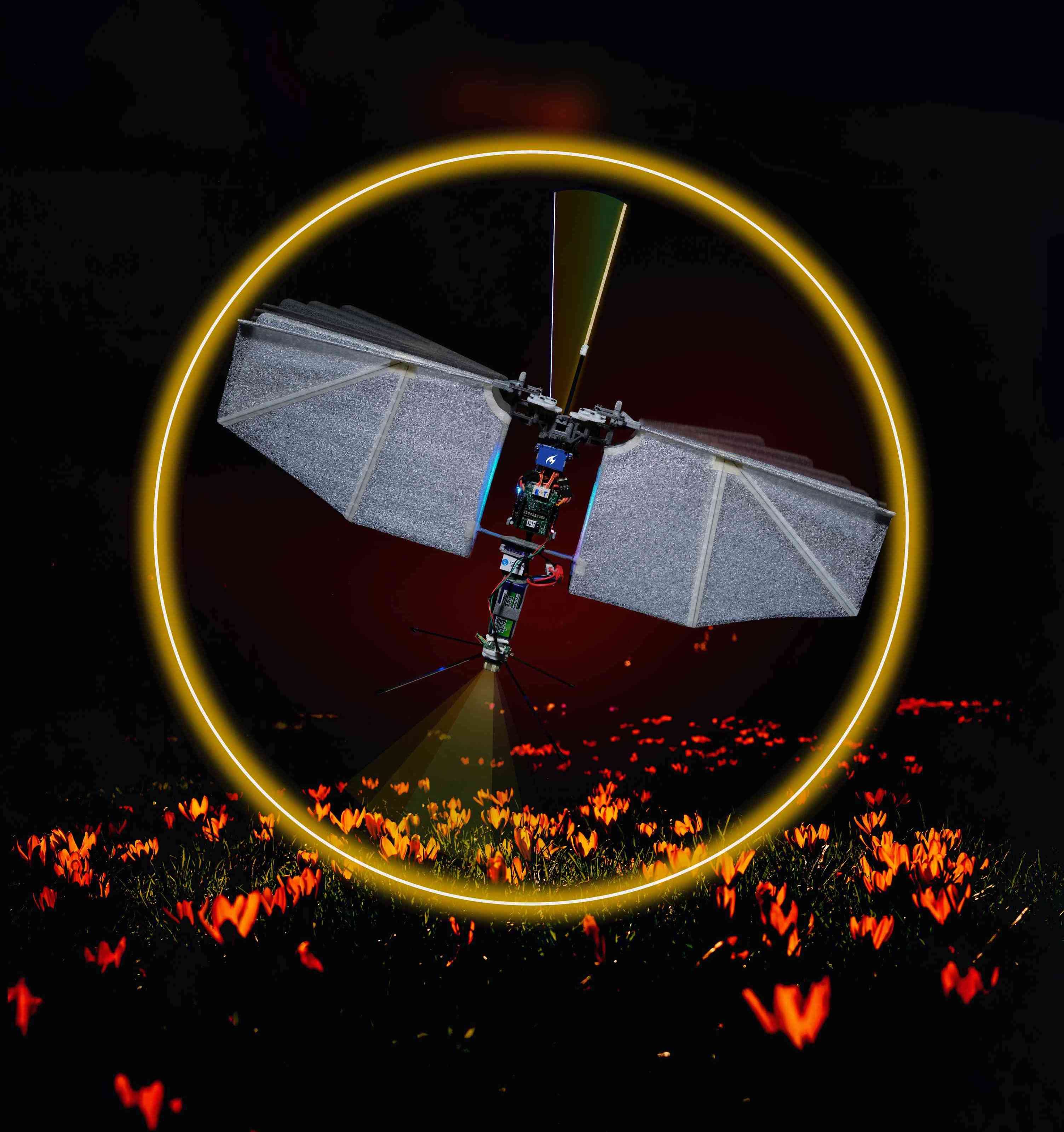
Robohub.org
Big step towards tiny autonomous drones

Scientists have developed a theory that can explain how flying insects determine the gravity direction without using accelerometers. It also forms a substantial step in the creation of tiny, autonomous drones.
Scientists have discovered a novel manner for flying drones and insects to estimate the gravity direction. Whereas drones typically use accelerometers to this end, the way in which flying insects do this has until now been shrouded in mystery, since they lack a specific sense for acceleration. In an article published in Nature, scientists from TU Delft and Aix Marseille Université / CNRS in France have shown that drones can estimate the gravity direction by combining visual motion sensing with a model of how they move. The study is a great example of the synergy between technology and biology.

On the one hand, the new approach is an important step for the creation of autonomous tiny, insect-sized drones, since it requires fewer sensors. On the other hand, it forms a hypothesis for how insects control their attitude, as the theory forms a parsimonious explanation of multiple phenomena observed in biology.
The importance of finding the gravity direction
Successful flight requires knowing the direction of gravity. As ground-bound animals, we humans typically have no trouble determining which way is down. However, this becomes more difficult when flying. Indeed, the passengers in an airplane are normally not aware of the plane being slightly tilted sideways in the air to make a wide circle. When humans started to take the skies, pilots relied purely on visually detecting the horizon line for determining the plane’s “attitude”, that is, its body orientation with respect to gravity. However, when flying through clouds the horizon line is no longer visible, which can lead to an increasingly wrong impression of what is up and down – with potentially disastrous consequences.
Also drones and flying insects need to control their attitude. Drones typically use accelerometers for determining the gravity direction. However, in flying insects no sensing organ for measuring accelerations has been found. Hence, for insects it is currently still a mystery how they estimate attitude, and some even question whether they estimate attitude at all.
Optic flow suffices for finding attitude
Although it is unknown how flying insects estimate and control their attitude, it is very well known that they visually observe motion by means of “optic flow”. Optic flow captures the relative motion between an observer and its environment. For example, when sitting in a train, trees close by seem to move very fast (have a large optic flow), while mountains in the distance seem to move very slowly (have a small optic flow).
“Optic flow itself carries no information on attitude. However, we found out that combining optic flow with a motion model allows to retrieve the gravity direction.”, says Guido de Croon, full professor of bio-inspired micro air vehicles at TU Delft, “Having a motion model means that a robot or animal can predict how it will move when taking actions. For example, drones can predict what will happen when they spin their two right propellers faster than their left propellers. Since a drone’s attitude determines in which direction it accelerates, and this direction can be picked up by changes in optic flow, the combination allows a drone to determine its attitude.”
The theoretical analysis in the article shows that finding the gravity direction with optic flow works almost under any condition, except for specific cases such as when the observer is completely still. “Whereas engineers would find such an observability problem unacceptable, we hypothesise that nature has simply accepted it”, says Guido de Croon. “In the article we provide a theoretical proof that despite this problem, an attitude controller will still work around hover at the cost of slight oscillations – reminiscent of the more erratic flight behaviour of flying insects.”

Implications for robotics
The researchers confirmed the theory’s validity with robotic implementations, demonstrating its promise for the field of robotics. De Croon: “Tiny flapping wing drones can be useful for tasks like search-and-rescue or pollination. Designing such drones means dealing with a major challenge that nature also had to face; how to achieve a fully autonomous system subject to extreme payload restrictions. This makes even tiny accelerometers a considerable burden. Our proposed theory will contribute to the design of tiny drones by allowing for a smaller sensor suite.”
Biological insights
The proposed theory has the potential to give insight into various biological phenomena. “It was known that optic flow played a role in attitude control, but until now the precise mechanism for this was unclear.”, explains Franck Ruffier, bio-roboticist and director of research at Aixe Marseille Université / CNRS, “The proposed theory can explain how flying insects succeed in estimating and controlling their attitude even in difficult, cluttered environments where the horizon line is not visible. It also provides insight into other phenomena, for example, why locusts fly less well when their ocelli (eyes on the top of their heads) are occluded.”
”We expect that novel biological experiments, specifically designed for testing our theory will be necessary for verifying the use of the proposed mechanism in insects”, adds Franck Ruffier.
Click here for the original publication in Nature. The scientific article shows how the synergy between robotics and biology can lead to technological advances and novel avenues for biological research.
The post Big step towards tiny autonomous drones appeared first on RoboHouse.
tags: bio-inspired, Flying




